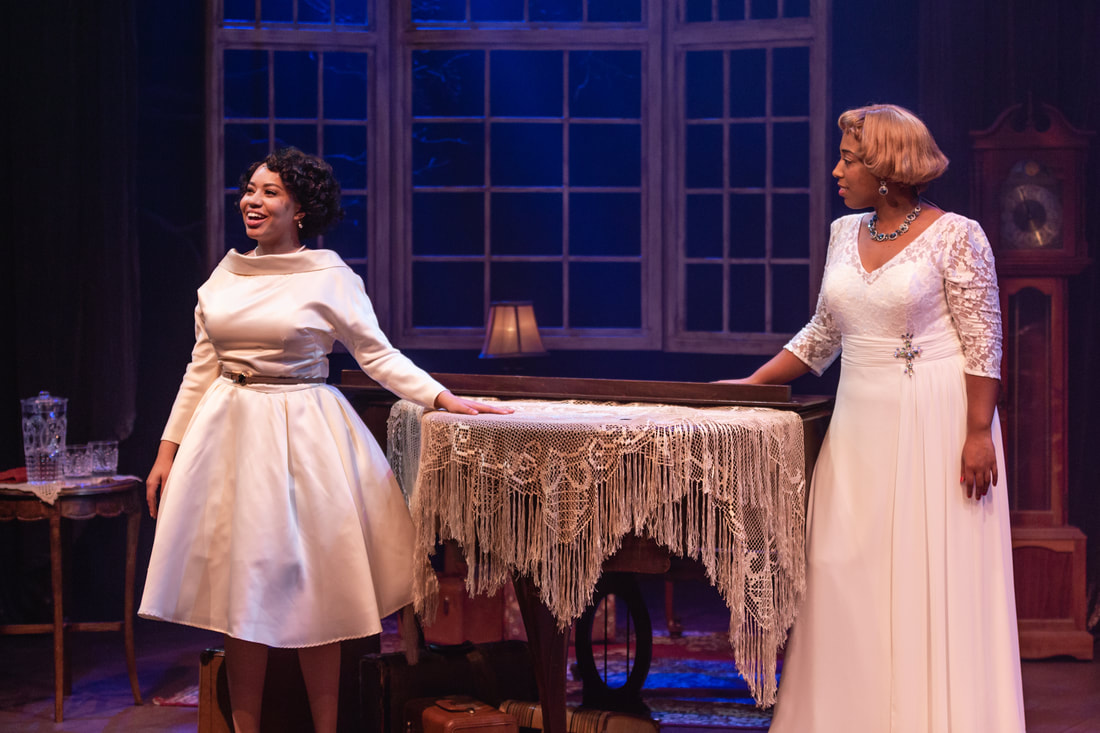|
Amaiya Holley (left) and Noel Simone Wippler in "Marie and Rosetta." Karli Cadel Photography There’s a thin line between gospel music and rock ‘n’ roll. That’s one of two resounding statements made in George Brant’s Marie and Rosetta. The other is that the woman known as Sister Rosetta Tharpe was a veritable musical pioneer, a genre-bending artist whose vocal and guitar stylings would influence rock artists of the ‘50s, ‘60s and beyond. Brant’s one-act work, directed at Cygnet Theatre by Rob Lutfy, follows Tharpe (Noel Simone Wippler) and her young protégé, Marie Knight (Amiya Holley), in Mississippi, circa 1946, as they rehearse for the first time as a duo and learn about one another’s lives. Among other things, Rosetta teaches Marie the merits of clubbing up the church and churching up the club.
While the story behind the music is historically important, particularly where Sister Rosetta was concerned, it’s the live musical performances by Wippler (chiefly on guitar) and pianist Holley (also a wonderful singer) that fuel Marie and Rosetta. Their collaborations on tunes such as “Four Five Times” and “Strange Things” make the show’s non-musical moments drag by comparison, though Brant has crafted a clever and affecting ending. (Review originally published in San Diego CityBeat on 1/23/19.)
0 Comments
Leave a Reply. |
AuthorDavid L. Coddon is a Southern California theater critic. Archives
July 2024
Categories |
David Coddon |
|
